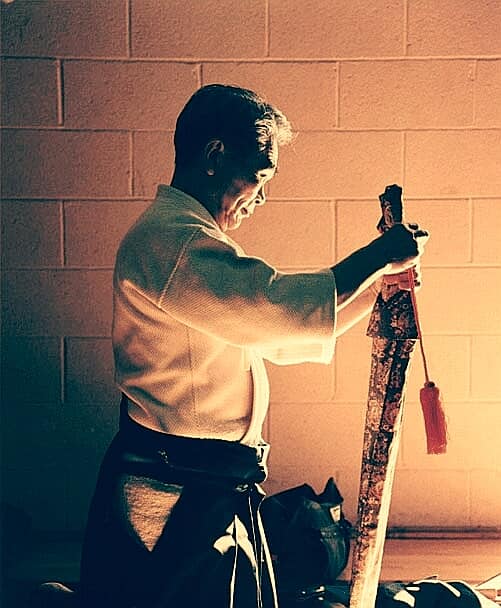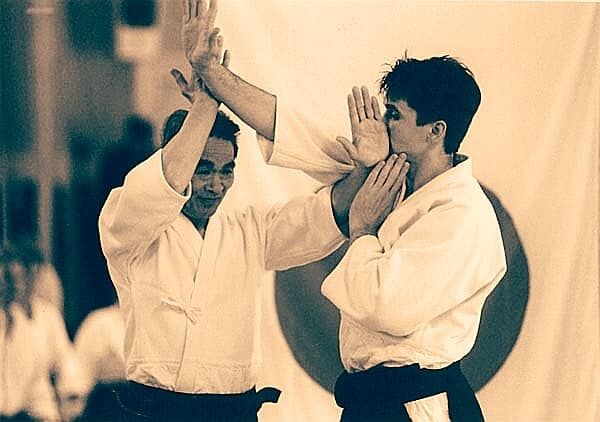It was a year and a half after starting Aikido at hombu before Nishio would see the famed Morihei Ueshiba, O Sensei, for the first time. O Sensei spent most of this time in the country in Iwama. When Nishio finally saw the founder in action he was impressed by his lightening fast swordsmanship and deft handling of the jo (wooden staff). Even so, Ueshiba offered little explanation about the what and how of his Aikido. This left many unanswered questions for Nishio. And when he asked his teachers about the role of the ken (sword) and jo in aikido they did not give him an adequate answer either. After seeing the founder’s ineffable use of these weapons his interest to learn more was kindle.
Nishio took things into his own hands and in 1955 he started iaido under Shigenori Sano (10th dan Muso Jikiden Eishin-ryu), and then jodo under Takaji Shimizu (headmaster of Shindo Muso-ryu).

Informed by his combined experience in judo, karate, iaido and jodo, Nishio’s Aikido started to take on a distinctive flavor which did not always meet with the approval of his Aikido teachers. Koichi Tohei is reputed to have said: “Nishio’s not doing Aikido. I don’t know whether he’s doing judo or karate, but it’s not Aikido. He doesn’t know how to extend ki!”
Nishio felt that improvements were needed in other areas as well. For one, the number of throwing techniques done in Aikido was being limited to mainly only iriminage, shihonage, and kotegaeshi. He remedied this with his own innovations of Aikido koshiwaza (hip throws) based on his experience in judo. Nishio also felt that atemi (striking) was an essential aspect of any true martial art, but it was entirely absent from post-war Aikido. He felt that it was misguided to say that Aikido could function as a martial art without using strikes. Atemi based on both karate and sword movements were integrated into every technique.
By 1958 Nishio has been promoted to 5th dan Aikido. Aikido was growing in popularity and dojo’s were springing up all over in universities and companies. Nishio Sensei found himself teaching more and more outside of Hombu Dojo. His training methods, techniques, sword and jo work grew in popularity among many schools, but they were never really accepted at Hombu. Even so, he personally maintained a good relationship with Hombu and with O Sensei. In 1976 he was promoted to 8th dan Aikido.
To be continued…
Source: Facebook/Aikido



